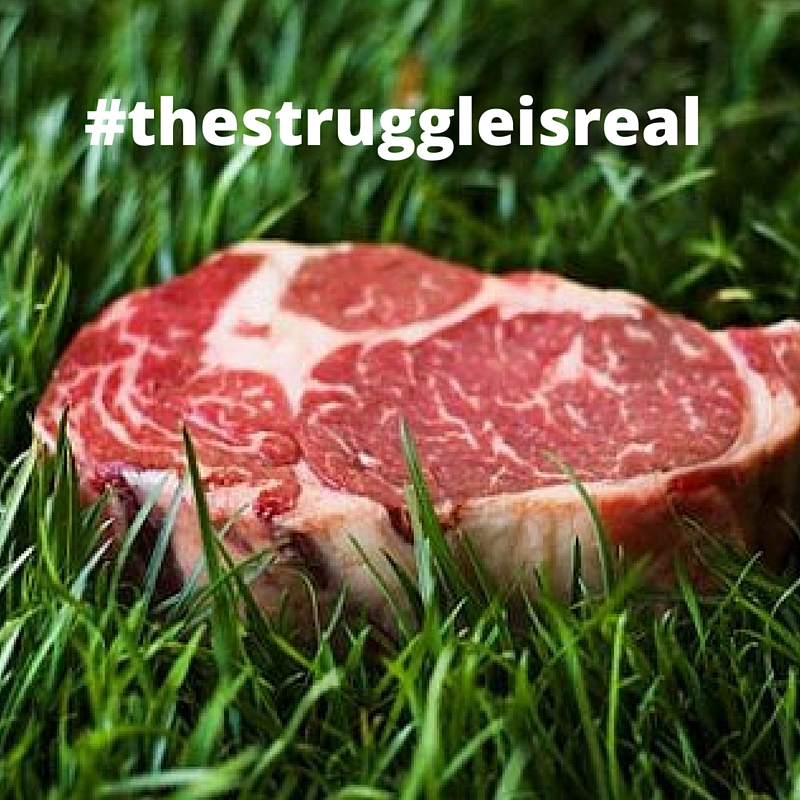
When I first tried my hand at cooking it a few years back. I completely overcooked my dinner… completely. After getting frustrated, feeling wasteful, and maybe tearing up a little (okay, I cried – I can be dramatic and yes, i know it’s a problem), I knew I needed to do better.
Because of the underwhelming and emotional dinner experience, I did a little research on where I went wrong. Apparently, there wasn’t just one area where I went wrong, there were a few. So to help you avoid my pitfalls, I put together a list of what I found was most helpful in preparing grassfed beef properly.
– Grass-fed beef, being lower in fat needs 30% less cooking time and needs to be removed from heat when it reaches 10 degrees below finished cooking temperature because it continues to cook during the resting period.
– Using oil or butter can help prevent sticking, dryness, and add quality to the browning.
– Very lean cuts like New York strips and sirloin steaks can benefit from a marinade. Choose a recipe that doesn’t mask the flavor of the beef but will enhance the moisture content. For safe handling, always marinate in the refrigerator.
– Using tongs instead of forks also helps preserves the juices.
– Always try to allow the meat to reach room temperature before cooking and remember to allow the meat to rest covered for about 8 minutes before cutting or serving.
– Never use a microwave to thaw grassfed beef. Either thaw in the refrigerator or, for quick thawing, place the vacuum sealed package in cold water for a few minutes. Let it sit at room temperature for no more than 30 minutes.
– Finally, Make sure whatever you are using, grill, oven or pan, is preheated!
Good luck friends!












How is Global Animal instrumental in Petfresh dog food? I do not understand your role.